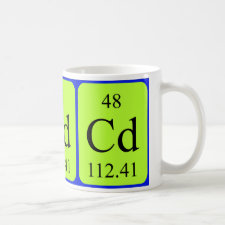
Authors: Wang HP, Lin YC, Li Y, Dolgormaa A, Fang H, Guo L, Huang J, Yang JX
Article Title: A Novel Magnetic Cd(II) Ion-Imprinted Polymer as a Selective Sorbent for the Removal of Cadmium Ions from Aqueous Solution.
Publication date: 2019
Journal: Journal of Inorganic and Organometallic Polymers and Materials
Volume: 29
Issue: (6)
Page numbers: 1874-1885.
DOI: 10.1007/s10904-019-01148-6
Abstract: To improve the adsorption capacity of Cd(II) ions, Cd(II) ions were imprinted on the surface of aminoethyl chitosan (AECS), which was coated on Fe3O4@SiO2 nanoparticles. A novel magnetic Cd(II) ion-imprinted polymer (Cd(II)-IIP) was synthesized, characterized, and applied to the selective separation of Cd(II) ions from aqueous solution. The adsorption-desorption properties and selectivity of Cd(II)-IIP and a non-imprinted polymer (Cd(II)-NIP) were investigated. The optimum pH and equilibrium binding time were established at pH 6.0 and 60 min, respectively. Kinetics studies demonstrated that the adsorption process proceeded according to a pseudo-first or second order model, while the adsorption isotherms agreed with the Langmuir model. The maximum adsorption capacities of Cd(II)-IIP and Cd(II)-NIP toward Cd(II) ions, as calculated by the Langmuir equation, at pH 6.0 and 25 ℃ were 26.1 and 6.7 mg/g, respectively. The imprinted polymer showed higher selectivity toward Cd(II) ions compared to the non-imprinted polymer. The relative selectivity factor (βr) values of Cd(II)/Cu(II), Cd(II)/Cr(II), and Cd(II)/Pb(II) were 3.315, 3.875, and 2.061, respectively. In addition, Cd(II) ions adsorbed on the Cd(II)-IIP adsorbent could be easily released using 0.1 M HNO3, thus showing good material stability and reusability. The adsorption capacity of Cd(II)-IIP was retained at 74% after undergoing six adsorption-desorption cycles
Template and target information: cadmium ion, Cd(II)
Author keywords: Aminoethyl chitosan, Magnetic sorbent, Cd(II) imprinting, adsorption, Heavy metal



Join the Society for Molecular Imprinting

New items RSS feed
Sign-up for e-mail updates:
Choose between receiving an occasional newsletter or more frequent e-mail alerts.
Click here to go to the sign-up page.
Is your name elemental or peptidic? Enter your name and find out by clicking either of the buttons below!
Other products you may like:
 MIPdatabase
MIPdatabase









